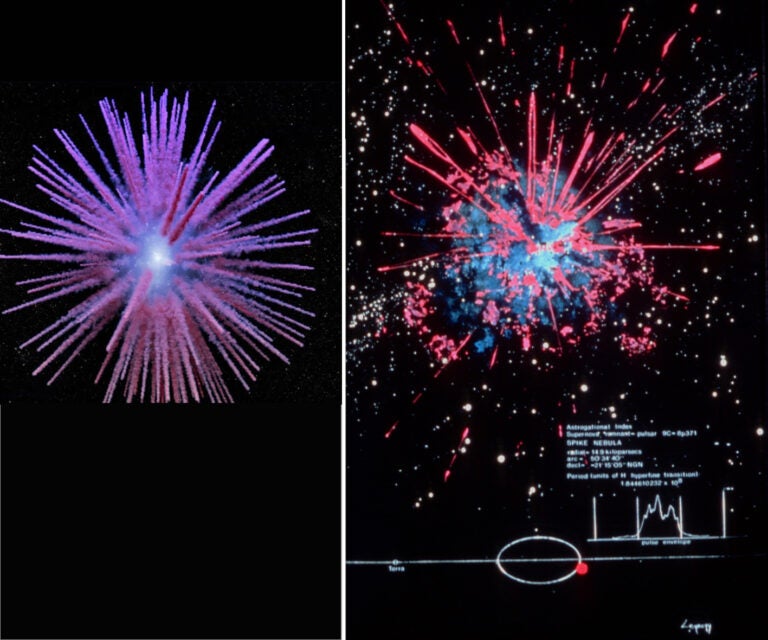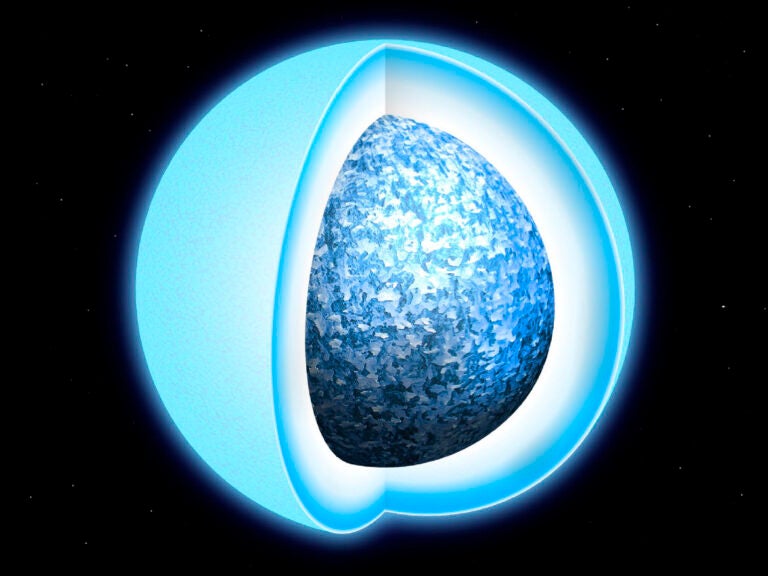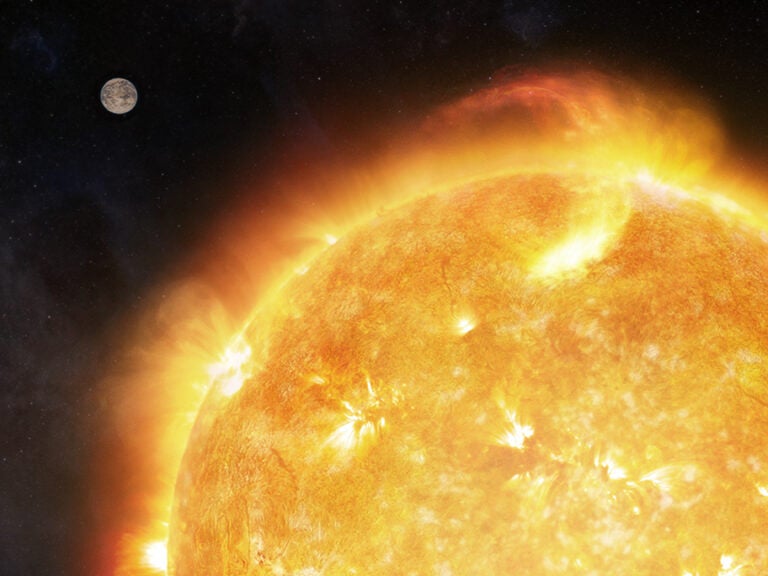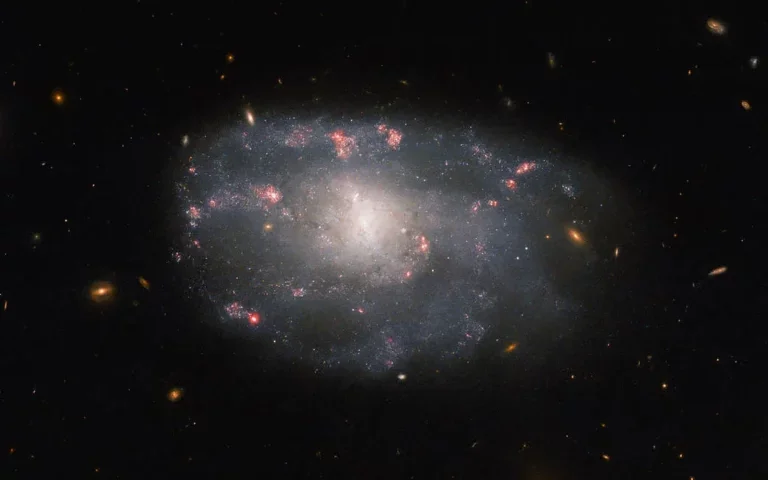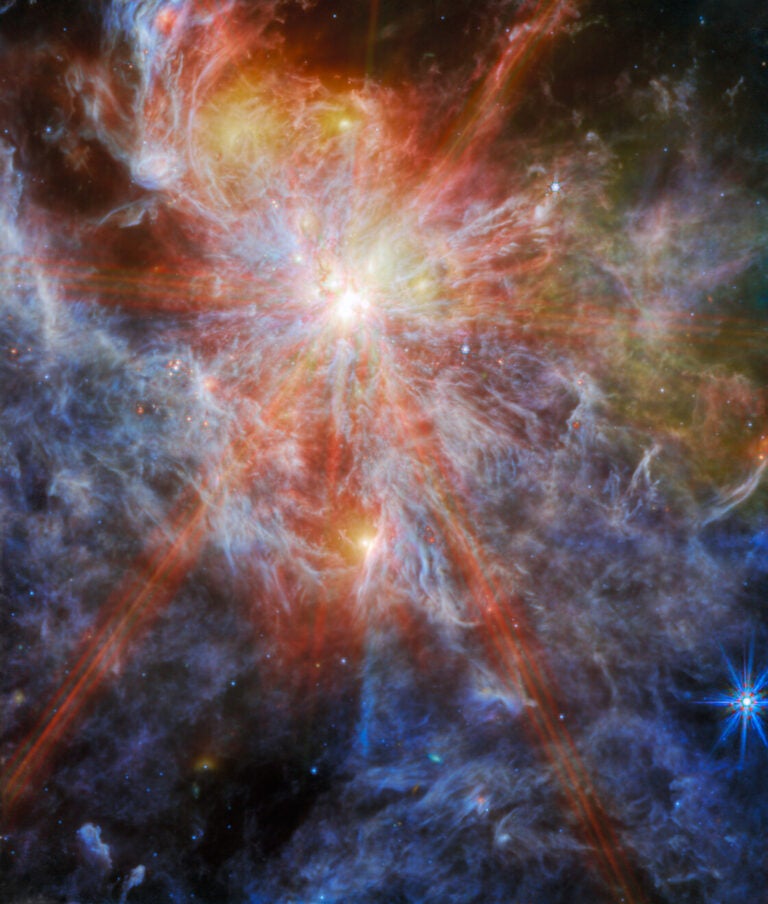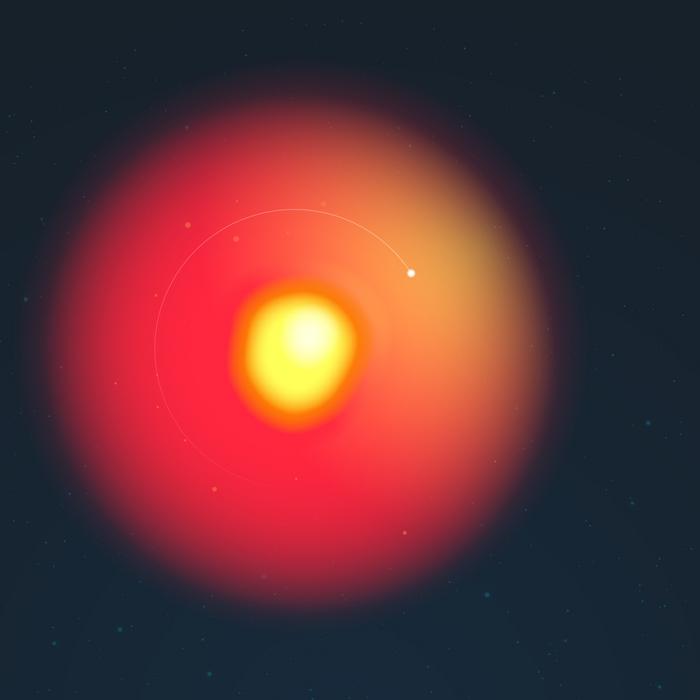
The bright red supergiant star Betelgeuse has long been a familiar sight for star watchers, winking with a ruddy glow from the shoulder of Orion the Hunter. But it’s also an increasingly popular target for professional astronomers thanks to its scientific peculiarities, ranging from pulsations to mysterious dimming events.
Now, astronomers think they may have found a key clue to Betelgeuse’s strange behavior: Two independent studies posted to the arXiv preprint server argue that Betelgeuse is actually part of a binary system, with a previously unknown companion star.
This proposed second star is much smaller than Betelgeuse and so far remains unseen; both teams inferred its presence based on how its gravity gently tugs Betelgeuse back and forth in the sky. But if astronomers can confirm the star with observations, it could explain Betelgeuse’s longest pulsation, which has baffled astronomers for decades.
Playing the long game
Betelgeuse’s strange behavior comes in the form of variations in brightness. The star pulsates in brightness not to a single regular beat, but to a range of overlapping rhythms with periods as short as a few hundred days and as long as thousands of days. One of them is directly related to the time Betelgeuse has left before it inevitably explodes. Most of the others are overtones or harmonics related to that ticking supernova timebomb. Which is which has been a matter of disagreement among researchers, but most agree that a 416-day cycle is the star’s so-called fundamental mode, the one that most directly portends its demise, and the shorter modes are its overtones.
But the longest cycle, which completes every 2,170 days, has remained a puzzle all its own. There are some researchers who do believe it to be the star’s fundamental mode — and if true, it would indicate that Betelgeuse is twice as large as generally thought, and set to go supernova at any moment. But most researchers disagree, hypothesizing that this longest cycle is something stranger and more subtle.
Additionally, for a few months at the end of 2019 into 2020, Betelgeuse suddenly dimmed completely off cycle, surprising astronomers and leading them to eventually surmise that the star must have blown off a giant dust cloud. Moreover, it prompted a new flurry of investigations into the familiar star, including the latest development, arrived at independently in two different studies currently on the arXiv preprint server, that Betelgeuse likely has a companion.
A companion star was first proposed over a century ago as a possible explanation for Betelgeuse’s periodic dimming and brightening. But this hypothesis fell out of favor as astronomers learned more about the life cycles of massive stars. It became clear that Betelgeuse has reached a stage of life where it physically pulsates on its own, expanding and contracting in a cycle. These pulsations slough off clouds of dust and gas from the star’s surface into an envelope of material that surrounds the star.
Still, these intrinsic pulsations generally occur on periods of hundreds of days or shorter, so they don’t explain the much slower pulsations found in Betelgeuse and other similar stars. These long secondary periods (LSPs) typically take thousands of days to complete one cycle of brightening and dimming.
Low-mass companion stars or large planets could explain some of these LSPs, as they transit or occult their central star and block some of its light. But finding them, especially around variable super-bright stars with extended atmospheres like Betelgeuse, is a steep challenge, so their existence is mostly more conjecture than observed fact.
Searching through history
The key for both studies was comparing Betelgeuse’s LSP to astrometric and radial velocity data. Both of these reveal how Betelgeuse moves ever so slightly on the sky — perfectly as if pulled on by an unseen companion.
A team led by Jared Goldberg from the Center for Computational Astrophysics at the Flatiron Institute in New York used astrometric data from the European Space Agency’s Gaia space telescope and painstakingly addressed every other possibility for Betelgeuse’s LSP, shooting holes in each theory until one was left: a low-mass companion star orbiting every 2,170 days. Their paper was posted on the arXiv Aug. 17 and has been accepted for publication in The Astrophysical Journal.
Morgan MacLeod from the Harvard-Smithsonian Center for Astrophysics in Cambridge, Massachusetts, led a second research group, who used radial velocity data from a century of observations, as well as astrometric data — measurements of Betelgeuse’s position — to tease out the star’s minuscule shifts on the sky. They posted their discovery on the arXiv just a month later, on Sept. 17.
Both teams agree closely on the facts of the invisible companion. It can’t be much more than the mass of the Sun, which makes it a mere one-twentieth the mass of Betelgeuse. And it circles Betelgeuse at a distance just short of Saturn’s average distance from the Sun — the rough equivalent of one Betelgeuse-width away from the surface of the star itself.
But Betelgeuse provided one more twist to the story.
“Prior to our work,” Goldberg says to Astronomy, “a leading theory for LSP behavior was a companion with a dusty tail occulting the star. But from the radial velocity, it has to be the other way around — dust blocks the star when the companion isn’t in view! So not an eclipse but an anti-eclipse. Or rather, dust eclipses the star, but the dust is where the companion is not.”
MacLeod’s team came to the same conclusion. Instead of the companion blocking light from Betelgeuse and causing a dip in brightness, the companion is apparently clearing out dust like a snowplow, causing Betelgeuse’s light to shine a bit more brightly during eclipse.
This could tie in neatly with the dust puff explanation for the Great Dimming in 2020, Goldberg’s team proposes in their paper. The dimming happened near LSP minimum, when the theorized companion would have been behind Betelgeuse. That would put its L3 Lagrange point, an orbital quirk of gravitational stability, directly between Betelgeuse and earthly viewers, possibly funneling the dust cloud along our line of sight and obscuring the star’s light.
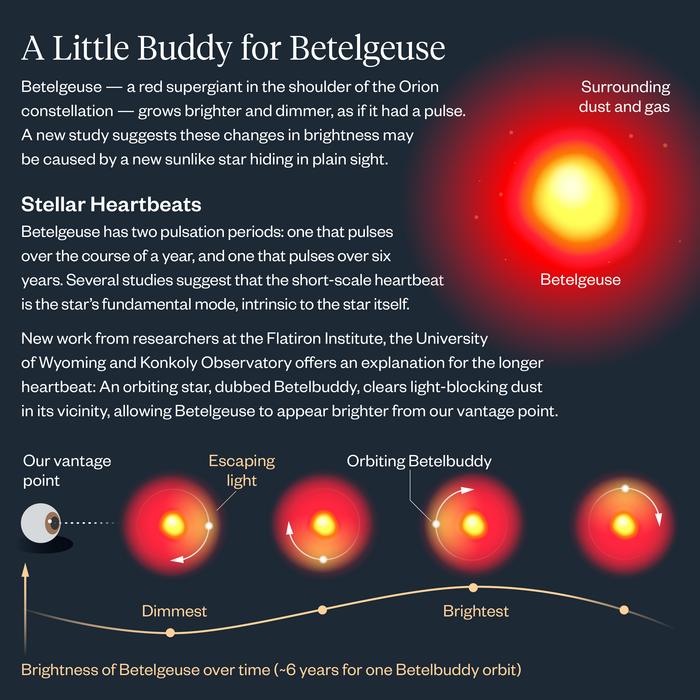
A shot in the dark
The next obvious step is also the most challenging yet — observing the companion. According to Goldberg, that “may not even be possible with current instruments. Some of that depends on how lucky we are and the properties of the companion.” Whether the companion is accreting material from Betelgeuse and how hot the companion is would yield different signals, which could both tell the team about the companion as well as make it harder or easier to observe.
“But,” he continues, “it’s easier now that we know when to look: If we’re right about this, the companion will pass Betelgeuse’s limb near December 6th of this year; at this point they’ll be maximally separated [from our point of view], and that configuration … gives us the best chance to distinguish companion from star.”
He calls their upcoming observations, which have already been approved, “a bit of a long shot. Detecting something ~100,000 times fainter than the thing it’s next to is hard!”
But Betelgeuse has always been full of surprises. Perhaps this time, the unlikeliness will work in our favor.




